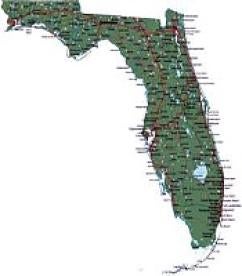Condominium developers have faced difficult times through the last few years. Many developers sold out buildings preconstruction, but as the buildings neared completion, buyers refused to meet their contractual obligations to close. To make matters worse, many buyers filed lawsuits seeking the return of their deposit monies. For these reasons, developers continued to hold large quantities of unsold units and faced unanticipated litigation expenses. Although much later than originally expected, condominium developers are approaching the threshold at which they will turnover control of the condominium association. This is good news for most developers, but as experienced developers know, turnover presents a new round of potential liabilities.
At turnover, Florida law mandates that developers provide detailed financial records to the post-turnover association. In addition, the developer must give a sealed architect’s or engineer’s report to the association. This report must include required maintenance, useful life and replacement costs for the common areas and all building systems. Once turnover occurs, these statutory reports may form the basis for claims against the departing developer.
Given the time that likely has elapsed between completion of the building, many potential construction defect claims by individual unit holders are barred by the three year limited warranty of fitness. However, Florida law generously provides an additional year after turnover within which an association may sue a developer for construction defects concerning roofing and structural components. Importantly, this may cause an association to try to resurrect some of the claims that recalcitrant buyers have alleged over the past few years. The association may sue the developer for purported failure to build common areas in accordance with the construction drawings. Developers who scaled down recreational areas and facilities could face these alleged claims, too. In addition, the association may sue a developer alleging improper accounting, inadequate maintenance and that the project was not built consistent with the sales brochures and other marketing materials. It is important to gain control of these issues as soon as possible. Developers need to identify issues pre-turnover and mitigate and negotiate any potential claims by the association, including through the compilation of financial records and preparation of the architect’s or engineer’s report. Prior to commencement of litigation, the developer should know whether and to what extent, if any, defects exist.
In devising a litigation strategy, the developer should:
1. Consider whether the association has standing to bring the claim. For example, if the claim involves defects in individual units, the association likely lacks standing.
2. Assess whether any of the claims are time-barred. Most post-turnover construction defect claims must be brought within five years of building completion.
3. Determine whether any buyer previously brought a claim for the alleged defect. In many instances, buyers unsuccessfully brought claims founded upon similar alleged shortcomings in the common areas. Courts’ prior determinations may be of assistance here.
4. Determine whether other parties are responsible for any of the alleged defects. The developer may look to the contractor, subcontractors, suppliers or even the design professionals in this regard. Moreover, the alleged problem may be a result of the association's poor maintenance rather than a construction defect.



 i
i

